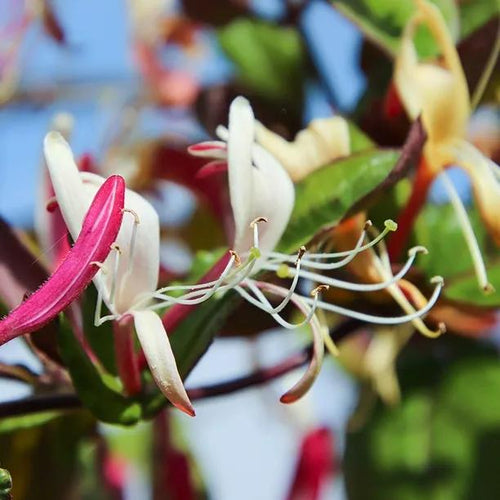Princess Kate Honeysuckle Plants
'Princess Kate Honeysuckle' lovely long scented, white and pink flowers all summer. The new growth is variegated, which fades as it matures. To 6-7m
Browse our variety of honeysuckle or see our full range of climbing plants.
Features
- Semi-evergreen leaves,
- White & pink trumpet flowers June to September
- To 6-7m
- Full hardy
- Strong perfume
- Sun or partial shade
- Needs support
Growing Princess Kate Honeysuckle
Great for any number of situations, scrambling over low walls, over arches and pergolas or into trees. It associates very well with other honeysuckles and climbing roses or can be planted with a clematis scrambling together over a fence or tree stump. It's essentially a woodland and cottage garden plant suiting informal planting schemes.

 Secure, One-Tap Checkout
Secure, One-Tap Checkout
 Hand Picked, Delivered to Your Door!
Hand Picked, Delivered to Your Door! 1 Year Bareroot Guarantee
1 Year Bareroot Guarantee


